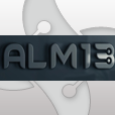Major Upgrade not behaving proper
I am facing a wierd problem (atleast to me) when i do a Major Upgrade, the upgrade doesn't actually installs the upgraded files, but uninstalls the earlier version. I have taken care of Product code and Upgrade codes.
When i place 'RemoveExistingProducts' betweeen InstallValidate and InstallInitialize, major upgrade is not actually updating latest files. So, when i launch the application after upgrade, it is not launching for the first time. But launches in the second time.
When i place 'RemoveExistingProducts' between InstallExecute and InstallFinalize, major upgrade is not installing upgraded files. so, after upgrade the system is not having application files. When i launch the application from start menu it actually does a repair, places the files and the application is launched.
I am not sure what is the problem. Can anyone help me out in this?
Thanks.
When i place 'RemoveExistingProducts' betweeen InstallValidate and InstallInitialize, major upgrade is not actually updating latest files. So, when i launch the application after upgrade, it is not launching for the first time. But launches in the second time.
When i place 'RemoveExistingProducts' between InstallExecute and InstallFinalize, major upgrade is not installing upgraded files. so, after upgrade the system is not having application files. When i launch the application from start menu it actually does a repair, places the files and the application is launched.
I am not sure what is the problem. Can anyone help me out in this?
Thanks.
0 Comments
[ + ] Show comments
Answers (7)
Please log in to answer
Posted by:
India_Repackaging
14 years ago
Hi,
The RemoveExistingProducts action to be run be scheduled to run in three ways
[/left]
The RemoveExistingProducts action to be run be scheduled to run in three ways
- InstallValidate action and the InstallInitialize action where the installer would remove the previous application before installing the new one.
- After InstallInitialse.
- [align=left]After InstallFinalise action. Microsoft recommends this method as the most effeicient method while working with upgrades.[/align]
[/left]
Posted by:
getIT
14 years ago
Posted by:
India_Repackaging
14 years ago
Hi,
Just trying to confirm if you have used the 3rd method where you place the RemoveExisitingProducts action after InstallFinalize. Since its a major upgrade, I presume the product code is changed and the new product uninstalls the old one and installs itself? Analyse the log for the RemoveExisitingProducts action.
Just trying to confirm if you have used the 3rd method where you place the RemoveExisitingProducts action after InstallFinalize. Since its a major upgrade, I presume the product code is changed and the new product uninstalls the old one and installs itself? Analyse the log for the RemoveExisitingProducts action.
Posted by:
getIT
14 years ago
Hi Ranjit,
Yes, i have used the 3rd method (placing RemoveExistingProducts after InstallFinalize), but the result is the same. The upgrade is not happening properly. As i have mentioned, when i launch the application from start menu it actually does a repair, places the files and the application is launched.
I couldn't find any error logged in the log file.
Thanks.
Yes, i have used the 3rd method (placing RemoveExistingProducts after InstallFinalize), but the result is the same. The upgrade is not happening properly. As i have mentioned, when i launch the application from start menu it actually does a repair, places the files and the application is launched.
I couldn't find any error logged in the log file.
Thanks.
Posted by:
AngelD
14 years ago
Posted by:
jmcfadyen
14 years ago
 Rating comments in this legacy AppDeploy message board thread won't reorder them,
Rating comments in this legacy AppDeploy message board thread won't reorder them,so that the conversation will remain readable.




